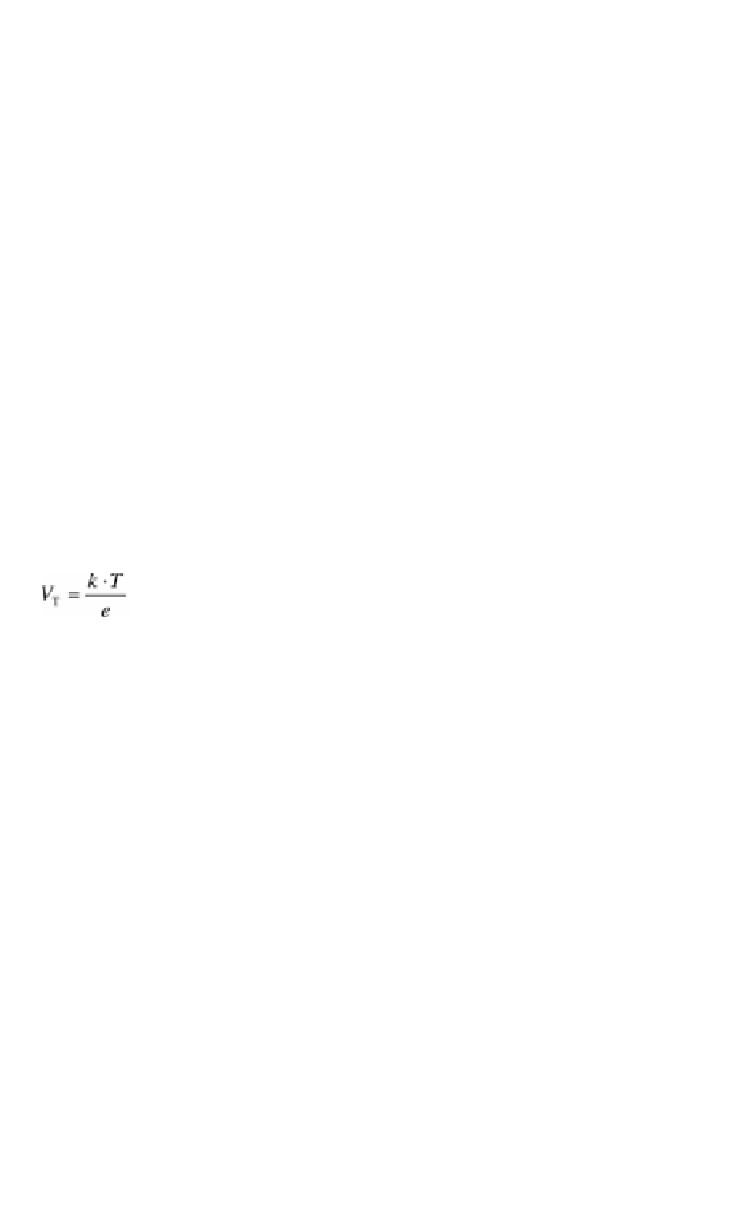Environmental Engineering Reference
In-Depth Information
Table 4.4
Electrical Solar Cell Parameters
Name
Symbol
Unit
Remarks
Open circuit voltage
V
OC
V
V
OC
~ ln
E
Short circuit current
I
SC
A
I
SC
~
I
Ph
~
E
MPP voltage
V
MPP
V
V
MPP
<
V
OC
MPP current
I
MPP
A
I
MPP
<
I
SC
MPP power
P
MPP
W or W
p
P
MPP
=
V
MPP
•
I
MPP
Fill factor
FF
FF = P
MPP
/ (
V
OC
•
I
SC
) <1
η
η
Efficiency
%
=
P
MPP
/ (
E
•
A
)
Temperature dependence
A constant temperature of 25°C was assumed for all equations of the previous
section. It was mentioned that the characteristics change with the temperature.
This section describes how to modify the solar cell equations to include the
temperature dependence.
The thermal voltage
V
T
must be calculated for a given temperature. With
the Boltzmann constant
k
= 1.380658
•
10
-23
J/K, the absolute temperature
T
in Kelvin (
T
=
ϑ
K/°C + 273.15 K) and the elementary charge
e
=
1.60217733
•
10
-19
A s, the temperature voltage is given by:
(4.47)
The temperature dependence of the saturation currents
I
S1
and
I
S2
with the
coefficients
c
S1
and
c
S2
and the band gap
E
g
of Table 4.2 is given by the
following equations (Wolf et al, 1977) for silicon devices:
(4.48)
(4.49)
The increase of the saturation currents with rising temperature explains the
decrease in the open circuit voltage. The temperature dependence of the series
resistance
R
S
, the parallel resistance
R
P
and the diode factor can be ignored for
further considerations.
Equations 4.48 and 4.49 ignore the temperature dependence of the bad
gap. While it does not significantly influence the saturation currents, its
temperature dependence is decisive for the
photocurrent I
Ph
. Due to the
decrease in the bad gap with rising temperature, photons with lower energy
can elevate electrons into the valence band, which increases the photocurrent.
Using the coefficients
c
1
and
c
2
, the temperature dependence of the
photocurrent is given by:




